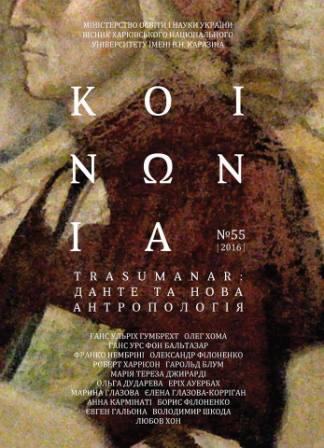FIGURA. FIGURAL ART IN THE MIDDLE AGES
Keywords:
figure, figurative representation, prototype, allegory, Dante
Abstract
The article presents a semantic analysis of the concept of “figure”. The author studies the variety of the concept usage in the medieval texts and demonstrates the transition from the original meaning of “figure” as a form to the medieval interpretation of the “figure” as a prototype. The author argues that the characters of Dante’s “The Divine Comedy” are based on a tradition of figurative representation and analyzes the images of Cato, Virgil and Beatrice as figures, in contrast to the established allegorical interpretation.
Downloads
Download data is not yet available.
References
Auerbach E.Figura. Zur Figuraldarstellung im Mittelalter // Neue Dantestudien. Istanbul, 1944, pp. 54–71
Published
2017-01-09
Cited
How to Cite
Ауэрбах, Э. (2017). FIGURA. FIGURAL ART IN THE MIDDLE AGES. The Journal of V. N. Karazin Kharkiv National University. Series "Theory of Culture and Philosophy of Science", 175-191. Retrieved from https://periodicals.karazin.ua/thcphs/article/view/7853
Section
ТОПОГРАФИЯ (ФИЛОСОФИЯ ДРУГОГО)




